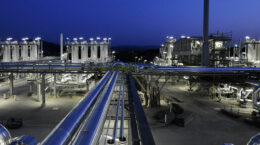Discover our solutions on the BASF Green Map
Climate change is a major challenge for our industries. We want to live up to our responsibility to protect the climate by creating chemistry for our customers and society. We do so by increasing the volume of renewable and recycled feedstocks from sustainable sources.
In our Green Map, we summarize the catalysts we offer to enable the use of renewable raw materials as feedstocks.
Click here to learn more about sustainability at BASF Process Catalysts.































